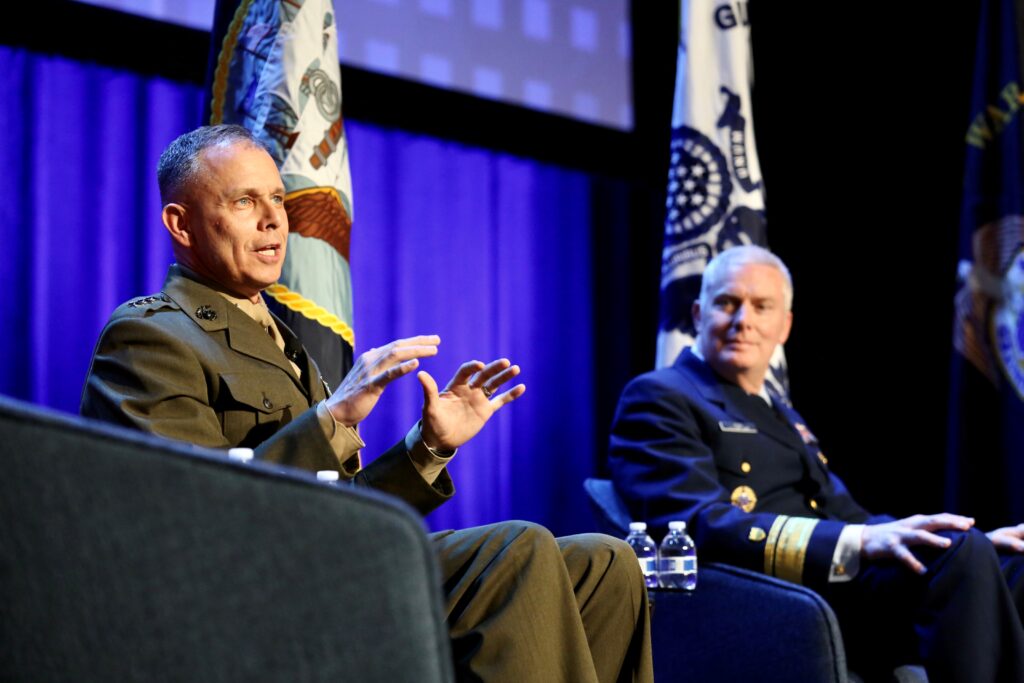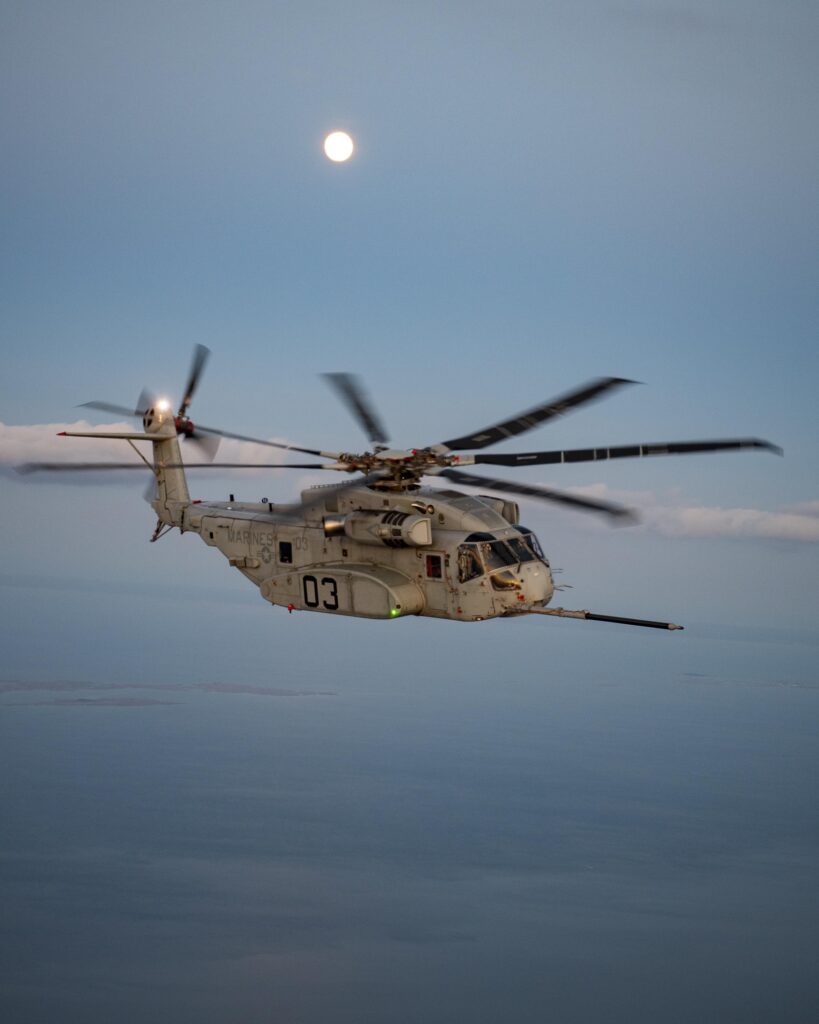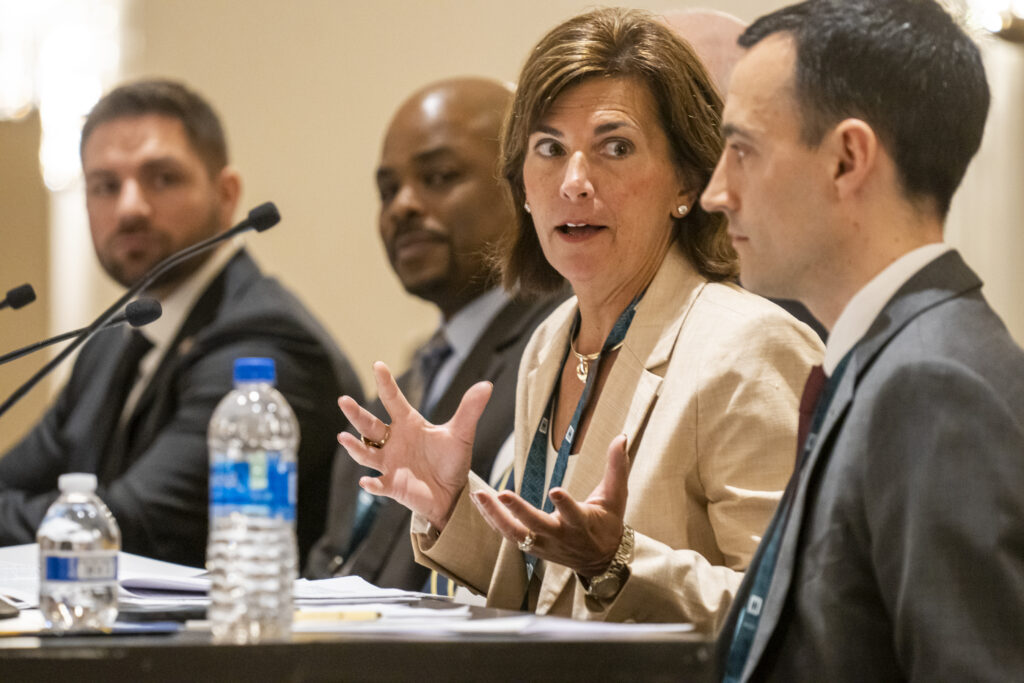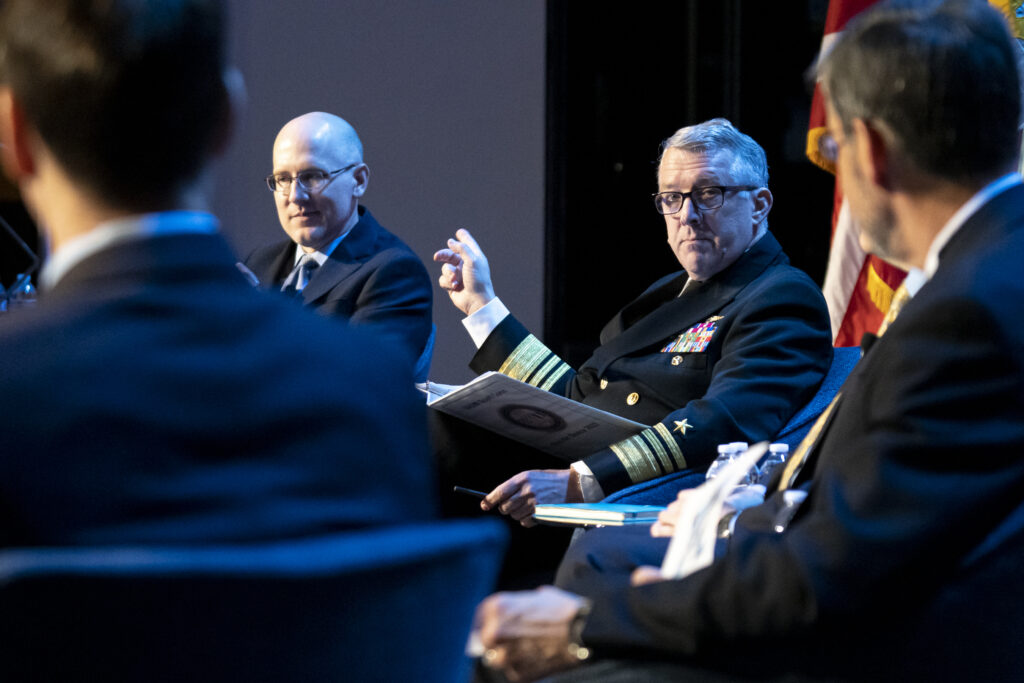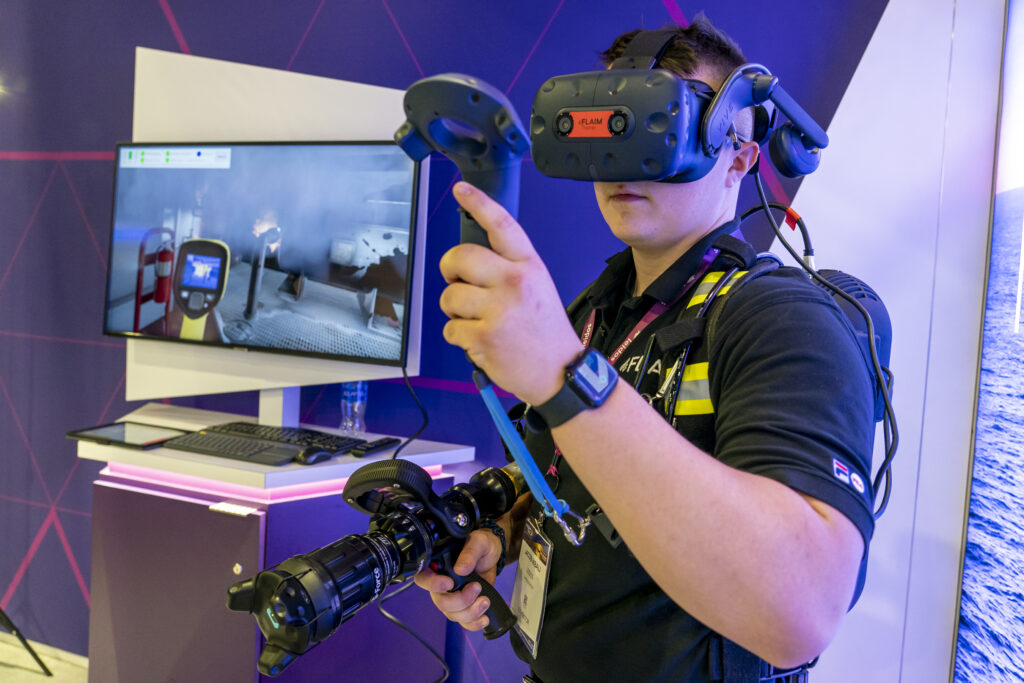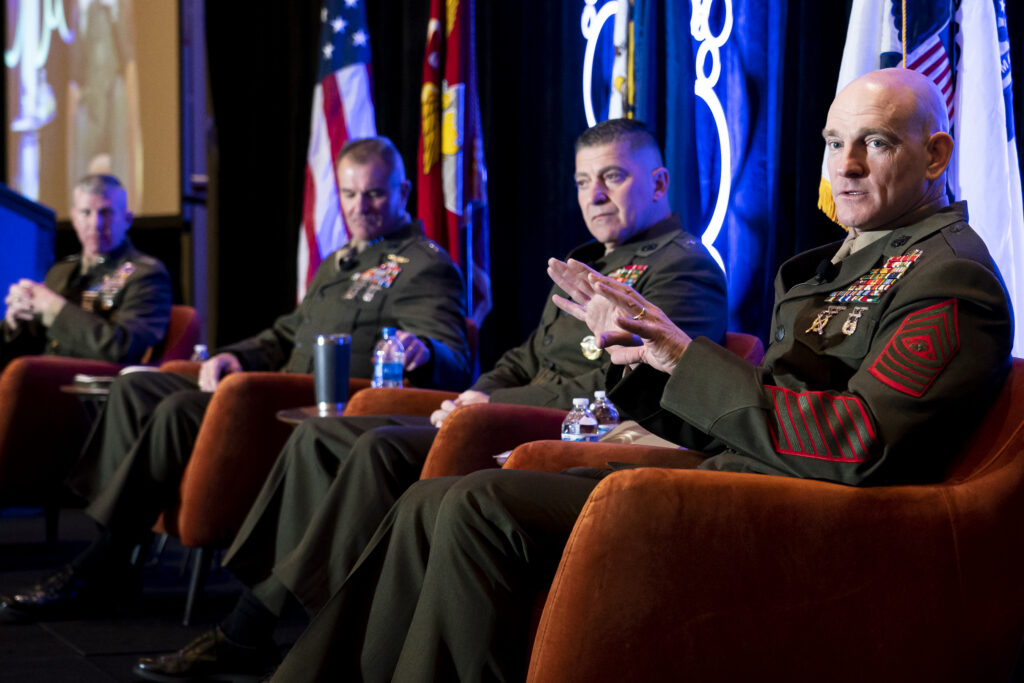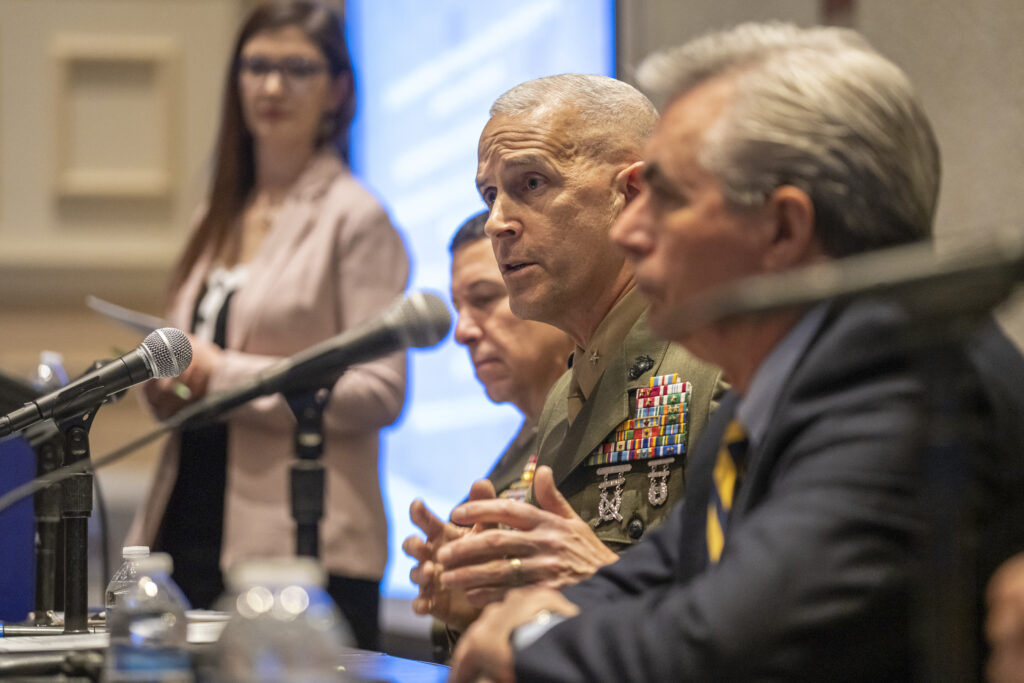Early Days in the Sea Services Helped Focus Their Careers, Women Leaders Say
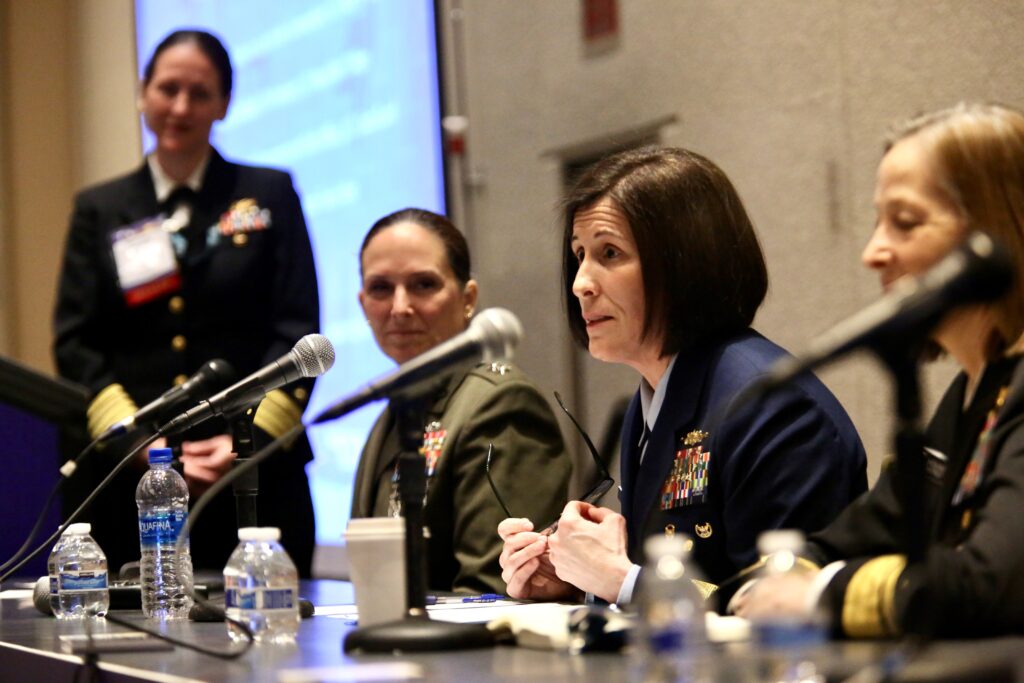
NATIONAL HARBOR, Md. — Senior-level women from across the sea services shared personal and professional insights and anecdotes about their earliest days in the military, and what helped guide them to the tops of their fields, in a panel discussion on Women’s Leadership on April 5 at Sea-Air-Space 2022.
U.S. Navy Capt. Emily Bassett, serving as moderator of the panel, also hosted the event on behalf of the Sea Service Leadership Association. Bassett is president of SSLA, the only nonprofit, national, volunteer-driven organization dedicated to the promotion, advancement and mentorship of women in the U.S. Navy, Marine Corps, Coast Guard, and National Oceanic and Atmospheric Association.
“Today’s event is a women’s panel, but really it’s about people,” Bassett said. “It’s not just about diversity of gender, it’s about diversity of thought and it’s about bringing our whole selves to the table. Today’s focus will be women leaders … who have made it to the top of their teams [and] who are willing to share their story.”
Maj. Gen. Bobbi Shea is the legislative assistant to the Commandant of U.S. Marine Corps. Shea described herself as a “distracted youth” when she was a child growing up.
“I spent a lot less time in high school than … I should have,” Shea said. “So, I enlisted in the Marine Corps really not knowing what I was getting into. But I will tell you when I put my feet on those yellow footprints in Paris Island, I tell people it was like coming home. Coming home to place that I had never been before. The discipline, the challenges, the rigor, the teamwork — all of these standard, base concepts quite frankly were foreign to me growing up.”
Shea said what she learned early on at boot camp was that meeting the challenges and standards was not so much about personal ambition, but “what you could bring to the team.” She said this thinking, more than personal ambition, drove her behavior and informed how hard she worked and how hard she tried.
Rear Adm. Megan Dean, director of government and public affairs for U.S. Coast Guard, said she wasn’t sure she was a good fit for the Coast Guard when she attended the U.S. Coast Guard Academy. Her feelings changed shortly after she graduated.
“I will tell you, I graduated, I got my commission. I showed up to my first unit, which was a 210-foot Coast Guard Cutter,” Dean said. “Our mission was mainly search and rescue and law enforcement all up and down the East Coast to the Caribbean, and I will tell you that I felt like I fit — that my talents matched those of my chosen profession.”


